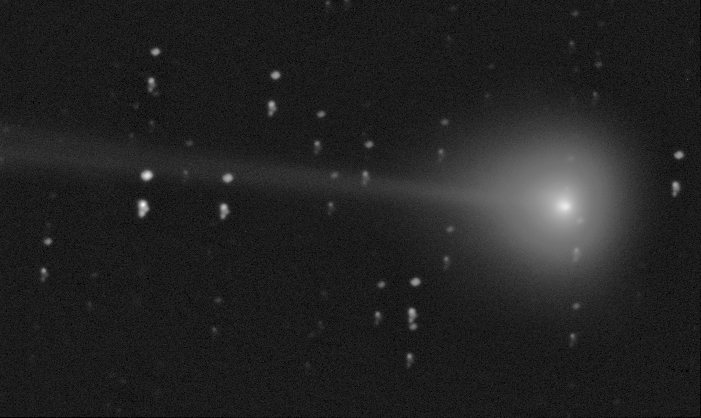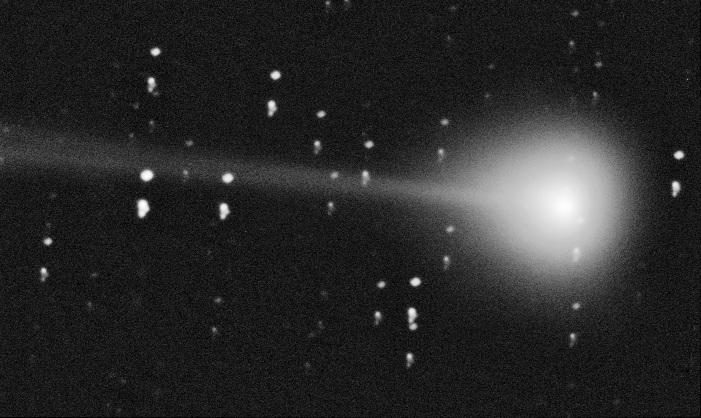
Comet 2001A2 LINEAR. May 23, 2001.
Combination of 4, 1-minute exposures, Meade 416xt CCD. 8" f/6 newtonian at prime focus.

In this image the strong central condensation in the coma is visible. Also note that the coma is not spherical. It is distinctly flattened on the sunward side. This shows up a little better in the image below which has been processed to show more of the outer coma.

Another interesting feature concerns the tail. The numerous faint streamers visible the previous night are not visible in this image. The tail is much more uniform. This could be due either to changes in the tail itself or to the fact that these images were taken through thin cloud! In an effort to show more of the tail of the comet, I took several more images and tried to assemble them as a mosiac. The result is shown below. Also, on this night the comet was passing close to the globular cluster M79 and the two were visible in the same low-power field.

A more successful series of images showing the tail was obtained a few nights later on May 27.